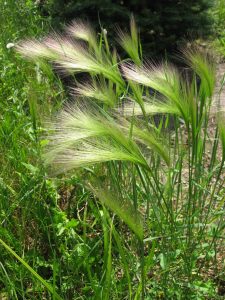What About Those Late-Season Grasses?

The dog days of summer have arrived, accompanied by several grower questions about late-season grass weeds poking through the cranberry canopy. Here are a couple of the most common questions, with answers and explanations based on grass biology and how the herbicides work.
I have grasses that appear to be starting to produce seed. Can I use one of the post-emergent grass herbicides like clethodim (example trade name: Select Max) or sethoxydim (example trade name: Poast) to kill the grass now?
Short answer: in addition to considering the pre-harvest intervals for these products, it’s not likely at all that satisfactory control would be achieved. These herbicides only control actively growing grasses at the growth stages indicated on the labels. Explanation: The post-emergent grass control herbicides work by inhibiting an enzyme that’s involved in producing lipids. These lipids are critical components in cell division and therefore plant growth. So, if the plant isn’t actively growing or has reached maturity, the lipid “factory” is also shutting down and there isn’t an active enzyme to block.
I applied one of these post-emergent grass herbicides (such as the clethodim or sethoxydim mentioned above) earlier in the season and the grass appears to have stopped growing but is still there. Is it dead?
Short answer: find the newest (youngest) grass leaves and give them a tug. If they’re still tightly attached to a green grass, the plant is likely still alive. If the newest leaves easily pull out of the plant and the base of that new leaf is brown and decomposing, the plant is at least severely injured if not dead. The rest of the plant often remains green but without new growth for several weeks after application. Explanation: Remember that the herbicide works at the active growing point, which on grasses is protected within the sheath of the newest leaves. So, while the upper portions of the youngest leaves may still look green, cell division and new growth happens at the base of the leaf, and therefore that’s where the injury is first visible.
This article was posted in Cranberry and tagged Cranberries, cranberry canopy, Herbicides, Jed Colquhoun, late-season grasses, post-emergent grass.
